draw the tree that represents the algebraic expression
There is more fun with trees.
Conversion of Algebraic Expressions into Tree Diagrams There is more fun with trees. Observe the following trees The above tree is nothing but the familiar equation a × (b + c) = (a × b) + (a × c). Thus we can see the algebraic expressions as trees. • The tree on the left has less number of nodes and looks simple. • The tree on the right has more number of nodes • Can we conclude that the value of both the trees are different Example 15: Convert '5a' into Tree diagram Solution: Example 16: Convert '3a + b' into Tree diagram Algebraic expression 3a+b Tree diagram Example 17: '6 times a and 7 less' Convert into a Tree diagram. Algebraic expression 6a − 7 Tree diagram Example 18: Convert the tree diagram into an algebraic expression. Tree diagram Algebraic expression 8b ÷ 6 Example 19: Convert the tree diagram into an algebraic expression. Tree diagram Algebraic expression (7 + t) 5 Example 20: Verify whether given trees are equal or not Tree diagram ( a + b) + c = a + (b+c) Yes, they are equal. Try these 1. Check whether the Tree diagrams are equal or not 2. Check whether the following algebraic expressions are equal or not by using Tree diagrams i) (x − y) + z and x − (y + z) (x – y) + z ≠ x – (y + z). They are not equal. ii) (p × q) × r and p × (q × r) (p × q) × r = p × (q × r). They are equal. iii) a − (b − c) and (a − b) − c a – (b – c) ≠ (a – b) – c They are not equal. Do You Know Consider the numerical expression 9 – 4. which means 4 is to be subtracted from 9. 9 – 4 can be represented as – 9 4 (so far we have come across with operation in between the operands) Suppose the expression is 9 – 4 × 2. This can be represented as × – 9 4 2 gives the meaning of Step 1: × 9 – 4 2 Step 2: (9 – 4) × 2 Take the expression + × − 9 4 2 5 Step 1: + × 9 − 4 2 5 Step 2: + (9 − 4 ) × 2 5 Step 3: [(9 − 4) × 2] + 5 This is reading an expression from "left to right". Similarly, we can read expressions from "right to left" also 9 4 2 5 + × − can be read as "right to left" expression which gives the meaning of 9 4 2 5 + × => (9 − 4) 2 5 + × => (9 − 4) × 2 5 + => [(9 − 4) × 2] + 5 Hence an expression can be read as "left to right" or "right to left" giving the same answer which is similar to name 4 as Naangu ( நான்கு ), Four, Nalagu ( నాలుగు ) and Char( चार ), all of them representing the collection of four objects. Similarly the numerical expression [ (9 – 4) × 8 ] ÷ [ (8 + 2) × 3] can be written as ÷ × – 9 4 8 × + 8 2 3 ( left to right) or 8 9 4 – × 3 8 2 + × ÷ ( right to left ). Try these: 1) × – + 9 7 8 2 2) ÷ × + 2 3 8 5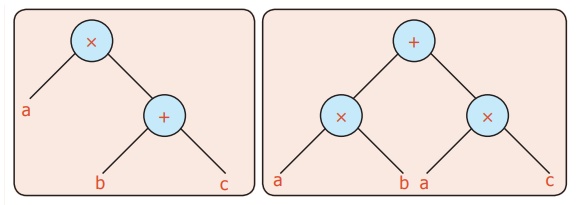
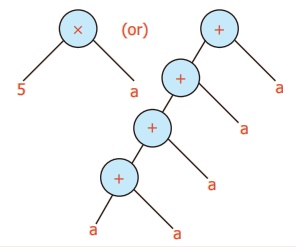
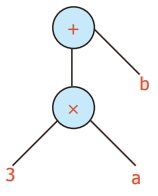


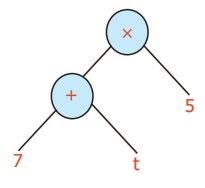
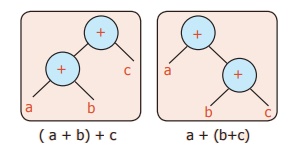
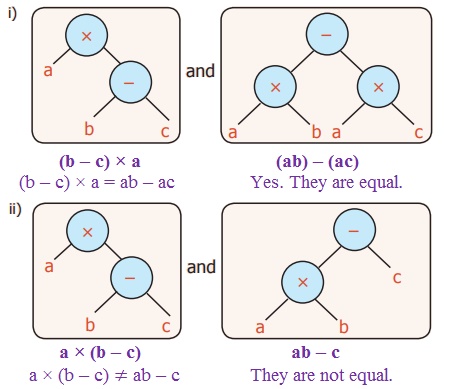
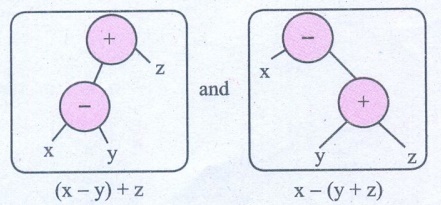
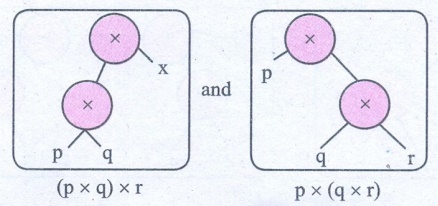
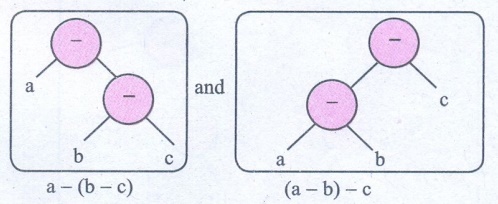
Tags : Information Processing | Term 2 Chapter 5 | 6th Maths , 6th Maths : Term 2 Unit 5 : Information Processing
Study Material, Lecturing Notes, Assignment, Reference, Wiki description explanation, brief detail
6th Maths : Term 2 Unit 5 : Information Processing : Conversion of Algebraic Expressions into Tree Diagrams | Information Processing | Term 2 Chapter 5 | 6th Maths
carterjustitingich.blogspot.com
Source: https://brainkart.com/article/Conversion-of-Algebraic-Expressions-into-Tree-Diagrams_44080/
0 Response to "draw the tree that represents the algebraic expression"
Post a Comment